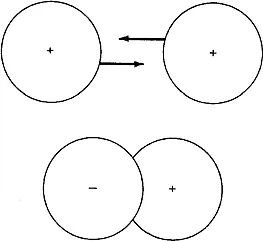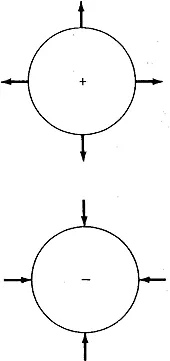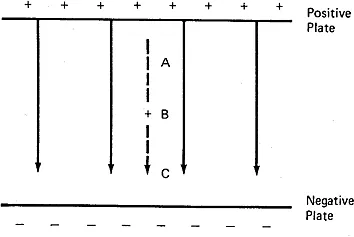![]()
1
Introduction to Basic Electricity
Almost without exception, when a person decides to use an instrument, it must first be connected to an electrical outlet. Because electricity is almost always available for our use, we tend to take it for granted, never questioning what it is or from where it comes. There are, however, some fundamental electrical concepts that are important to the overall understanding of clinical and laboratory equipment as it is discussed in later chapters of this book. But even more important, these concepts should be understood in order to operate instruments safely. This chapter contains a simplified discussion of where electricity comes from, what its basic parameters are, and how it can be used safely. Some simple equations and formulas illustrate the basic concepts, and you are encouraged to study them.
ELECTRICAL FIELDS AND CHARGES
Atoms are no longer thought of as the smallest particle of an element. We now know that atoms are made up of much smaller particles, some of which are: electrons, protons, and neutrons. Electrons and protons are the stuff of which electrical energy is made. Electrons have an electrical charge with a negative value, whereas protons have an electrical charge with a positive value. Both protons and electrons are of fundamental importance to the presence of electricity. Because neutrons have a neutral or zero charge, we will not be concerned with them in this chapter.
Figure 1.1 demonstrates a basic characteristic of electrical charges. Charges that are of the same value or sign will repel each other; charges that are of dif-
ferent values or signs attract. Most of us have demonstrated an analogous property to ourselves with magnets. If we hold the south poles of two magnets together and then release them, the magnets jump apart. If, on the other hand, we hold the south pole of one magnet and the north pole of the other magnet close together and then release them, they jump together. There is a field of force (attraction) between the magnets just as there is with the electrical charges. This force field pushes like charges away and attracts dissimilar charges. By convention, this field of force is usually visualized from the perspective of the positive electrical charge. Figure 1.2 shows the field of force as arrows pushing away from the positive charge and pushing toward the negative charge. In other words, if the charge is positive, the direction of the force field is away from it; if the charge is negative, the direction of the force field is toward it.
Figure 1.3 shows a force field between two plates; one with a positive charge and one with a negative charge. Arrows show the direction of the electrical field of force, and a single, movable charge is midway between the two plates. The charge is being pushed down away from the top plate and pulled down toward the bottom plate. It is important to remember that the force of the field is constant anywhere between the two plates. That is, the farther away from the positive plate the charge moves, the less force is exerted from the top, but an increased force of equal strength pulls from the bottom. For example, if the charge is subjected to a force of two Newtons at point A, it is also subjected to a force of two Newtons at points B and point C. Midway between the two plates, the downward push equals the downward pull. When the positive charge is closer to the upper plate, the downward push is stronger than the pull, but the sum of the two equals the same value as when the charge was at the midpoint. The same is true if the charge is closer to
the bottom plate because now the downward pull is greater than the downward push.
Another way to set up a constant electrical field is with a battery. When a wire is connected across the poles of the battery, it produces a constant electrical field inside the wire. Any movable charge inside the wire feels the force of the poles of the battery. The force then pushes the charges through the wire—that is, causes electricity to flow.
At this point it is reasonable to ask, “Where do these electrons or charges that travel through the wire come from?’’ Before answer...



